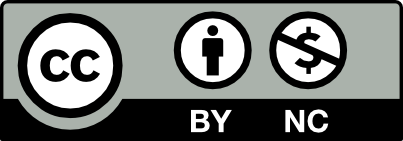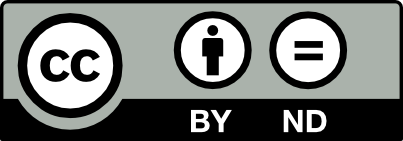FAQ Copyright, Creative Commons & OER
Diagrama de temas
-
-
CC licences from CreativeCommons.org are open licences with which authors grant users the right to
- reproduce
- use
- adapt*
- mix* and
- distribute works at no cost.
CC-licensed materials are also copyright protected. The conditions specified in the licence texts must therefore be complied with. Such conditions include naming
- the title with a link to the original,
- the author and
- the licence with a link to the licence text (see below).
Video: Using images under a free licence – common errors and how to avoid them (in German only)
* Does not apply to works that have ND (no derivatives) in the licence designation.
In the ZHAW Open Educational Resources (OER) Policy, the publishing of materials under CC-BY or CC-BY-SA is recommended, as these represent open educational resources.

CC0
No copyright attribution requirement
Allowed: adaptations, commercial use
CC-BY
Requirement: copyright attribution
Allowed: adaptations, commercial use
CC-BY-SA (share alike)
Copyright attribution, provision under same licence (CC-BY-SA)
Allowed: adaptations, commercial use

CC-BY-NC (non-commercial)
Copyright attribution, no commercial use allowed
Allowed: adaptations
CC-BY-NC-SA
Copyright attribution, no commercial use allowed, provision under same licence (CC-BY-NC-SA)
Allowed: adaptations

CC-BY-ND (No Derivatives)
Copyright attribution, noc adaptaitonsAllowed: commercial use
CC-BY-NC-ND
Copyright attribution, no adaptations, no commercial use allowedEven if works are found freely online, they are generally copyright protected and cannot be distributed without the consent of the authors. (A label like the © symbol or a text note such as “All rights reserved” is not needed to indicate that the content is protected.)
Open licences allow for the use, adaptation and distribution of copyright protected material without having to check with the authors. This is particularly crucial if you want to publish your materials, for example:- at conferences
- in MOOCs on edX or Swiss MOOC Service
- in videos for YouTube or Kaltura Mediaspace
- in academic publications or theses or
- on social media and blogs.
The list of Creative Commons provides a very good compilation of search tools available for a wide variety of media types and educational materials.
OER from German universities and beyond can be found at OERSI.org.
X5GON Discovery is an international OER search index.
Which CC licences you are allowed to combine in a work depends on whether the works remain clearly distinguishable from one another or are inseparably merged to produce a new work. A differentiation is made between the following:
1 a) Compilation of third-party materials- Several CC-licensed works are compiled in a collection in which they are clearly distinguished from each other and published (e.g. as a reader).
- The compilation does not get its own licence.
- You are allowed to combine all CC licences.
1 b) Integration of materials within your own contents
- You integrate CC-licensed works in your own contents in a clearly distinguishable manner (e.g. as part of a PowerPoint presentation).
- Your work is given a licence of your choice or no licence.
- You are allowed to combine all CC licences.
2. Merging
- CC-licensed works are merged to create a new complete work in which the individual components can no longer be distinguished (e.g. in a video).
- Not all CC-licensed materials can be combined.
- It is not permitted to use CC-BY-ND materials.
- The licence for the complete work
is based on the licence of the included work with the strongest
restriction (combination of CC-BY and CC-BY-SA: the new work is assigned a
CC-BY-SA licence).
See also the licence compatibility chart
To comply with the licensing requirements of CC-BY licences, attribute the used materials according to the TULLU rule (referred to as TALLO in English). Include the:
- Title
- Author
- Licence
- Link to the licence
- Origin (link)
- (Adaptations you have made).
Example:
How to read an academic journal article? by Charlotte Hartwright (as at 5 April 2017) under CC BY 4.0, video shortened and adapted with interactive content by Pascal Meier / ZHAW, Social Work (as at 28 April 2023)
Wherever possible, place the licence designation directly at the materials used (e.g., underneath the image). If this isn’t possible, the reference should be made as close to the work as possible (e.g., attribution list at the end of a video). The order in which the details are entered does not matter. Citations in academic texts can, for example, also follow common citation styles if all of the aforementioned details are provided in the citation. Further information: Information sheet on CC licences and publishing OER at the ZHAW. See also the "Best practices for attribution" page for further details.TALLO refers to a rule for the labelling of openly licensed works as follows:
T: Title
A: Author
L: Licence
L: Link to the licence text
O: Origin (link)
Where possible, also state:- date of publication of the original
- (Type and date of the adaptations you have made).
Example:
How to read an academic journal article? by Charlotte Hartwright (as at 5 April 2017) under CC BY 4.0, video shortened and adapted with interactive content by Pascal Meier / ZHAW, Social Work (as at 28 April 2023)
The order in which the details are entered does not matter. Citations in academic texts can, for example, also follow common citation styles if all of the aforementioned details are provided in the citation.The order in which you provide the information does not matter. Citations in academic texts can, for example, also follow common citation styles if all of the elements required under the TALLO rule are provided in the citation:
T: Title
A: Author
L: Licence
L: Link to the licence text
O: Origin (link).CC0 licences and other licences of free image databases like Pixabay, Pexels, or Unsplash do not require copyright attribution. Nevertheless, it is advisable to name the source and a link to the original.
- This way, you can prove the origin of the material in case a warning.
- You do not make the third-party material your own by circulating it under your own name.
The license condition "Non Commercial" is not as easy at it looks at first glance.
Avoid applying this license module for your own materials and avoid using NC-licensed material from third parties for your own work. The NC module of the Creative Commons license not only prohibits selling the work, but also raising any monetary compensation with it.
This concerens:- - MOOCs that offer a paid certificate.
- - Platforms that are themselves commercial or advertise (such as YouTube or blogs.
Good to know: From a copyright point of view, continuing education at the ZHAW falls under the exception for the use in the classroom (CopA Art. 19(1)b). Thus, parts of works with all rights reserved may be used there in just as parts of works under any Creative Commons license.
The ZHAW Open Educational Resources (OER) Policy recommends that all employees publish teaching materials under an open licence.
Nevertheless, please consider the FaHG law governing the Zurich universities of applied sciences and arts (§16 (1)(b)) in which it is specified that the rights of use for copyright protected works that you create in performing your official activities lie with the university. While the rights of use remain with the ZHAW upon publishing such a work under a CC licence, a corresponding order or permission from your line manager is still required. For reasons of proof, you should keep the written confirmation of consent (e.g. e-mail).
Please also be sure to consider the personal rights of the depicted individuals who must provide their written consent to publication under a CC licence.
Here, you can find the Checklist: OERs – from planning to publication (in German only), which also covers co-authorships and the use of third-party materials.The ZHAW Open Educational Resources (OER) Policy recommends licensing under:
If you would like to specify further restrictions (non-commercial, no adaptation), use the CC licence chooser to determine your licence. The license chooser guides you step by step through queries to the right Creative Commons license for your needs.
You can then download the Creative Commons license icon and apply it to your work. This alone is needed to put the work under a Creative Commons license and thus publish it as OER. It is not necessary to register your work with Creative Commons or anything the like. The use of Creative Commons licenses is free of charge.The use of CC licenses is free of charge. There is also no need to register or upload the material to Creative Commons. You just need to embed the icon of the corresponding license and link to the license text.
At the beginning or end of your work, include the following:- The licence icon – with a link to
the licence text
Download CC icons or
Download and integrate HTML code from the license chooser for mashine readability . - The licence designation – with a
link to the licence text or written out URL,
e.g. "Except where otherwise noted, this work is licensed under CC-BY 4.0". - Your name as it shall be stated at re-use (ideally with your institution)
- Date of publication of your work.
Here you can find an example.
Place the license in the work itself, e.g. in the video, not just on the platform where you upload the work. This way, the license is included when third parties download and use your work.Where it is not possible to place the license directly in the work, e.g. in the case of images, it should be located as close to the work as possible.
For more information, please see: Information sheet onCC licences and publishing open educationalresources (OER) at the ZHAW
You can download all CC icons here free of charge and without having to register and subsequently use them.
If you have the option to integrate an HTML code into your work (e.g. in a website, a blog or on Github etc.), download and integrate the CC icon as HTML code from the license chooser for machine readability.
A licence cannot be revoked if a work has already been distributed by others under this licence.
Even if you would like to remove a licence or remove CC-licensed material from the network, the licence remains valid in the material that has already been distributed by others. This means that a CC-licensed work can continue to be distributed in the network even after having been removed from the network by the author.
If you distribute materials yourself that are under a CC licence, you cannot subsequently be prohibited from making use of these.CC-licensed works remain copyright protected. They may only be distributed within the scope of the licence conditions. This means, for example, that correct attribution is required for the use of CC-licensed works.
Always adhere to the licence requirements in order to ensure you do not breach copyright when using CC-licensed material.
Video: Using images under a free licence – common errors and how to avoid them (in German only)
-

